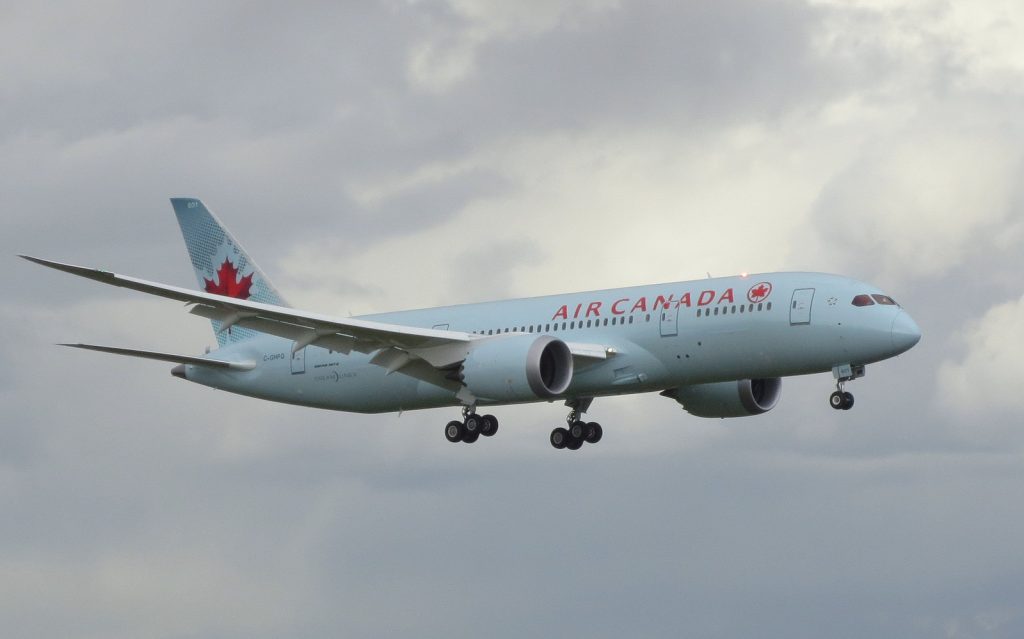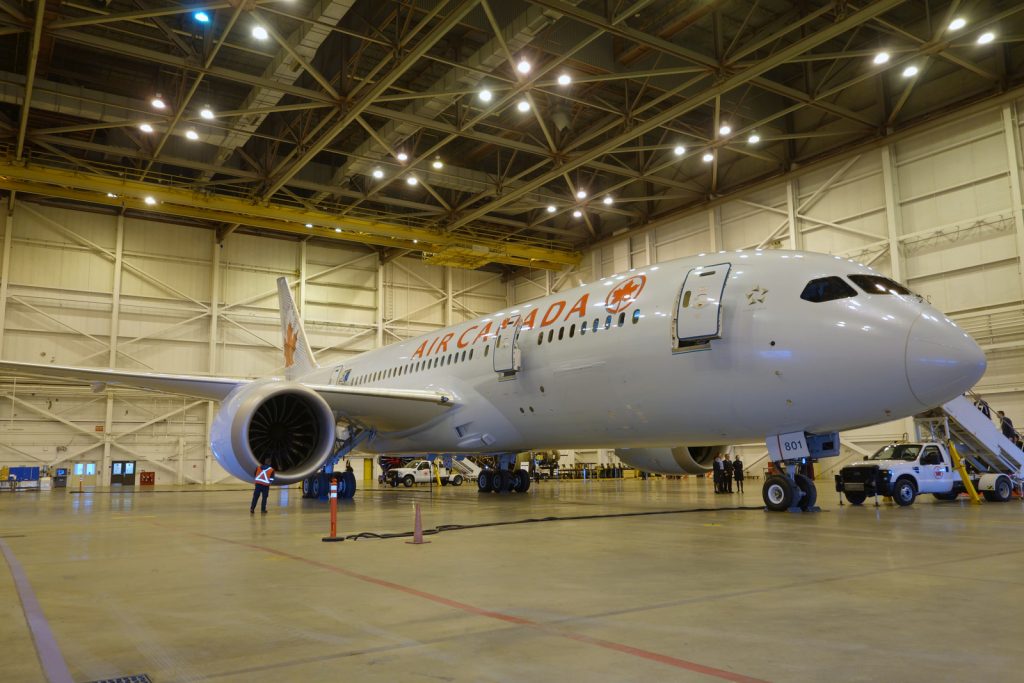Written for Skies Magazine – July/August 2014
Air Canada “got the keys” to its very first Boeing 787-8 Dreamliner early in the morning on Sunday, May 18. After a small celebration at Boeing’s Everett Delivery Center near Seattle, Wash., a select group of Air Canada executives and employees boarded C-GHPQ (Fin #801), for the plane’s first flight to Canada. The trip to Air Canada’s main operational base in Toronto (YYZ) was a short three hours, 48 minutes at a cruising altitude of 41,000 feet.
Capt Murray Strom, Air Canada’s chief pilot for the 787 and 777, later commented, “The plane flew from Everett to Toronto higher and faster than the 767-300ERs it’s replacing. And fuel burn was just as expected, 20 per cent less than the 767.”
After arriving in Toronto, and over the next two days, #801 was on display for the airline’s employees, frequent-flier status members, friends, partners and the media. The Dreamliner has generated a level of interest and excitement not seen for over 40 years, since the introduction of Air Canada’s Boeing 747, in the early 1970s.
Scheduled around the public tours of the plane, Air Canada’s initial group of 787 pilots were training in #801 soon after it arrived in Toronto. These first flights saw the plane flying from YYZ to Ottawa (YOW), and then looping back and forth to Montreal-Mirabel (YMX) before returning to YYZ. Pilots flew approaches at both airports, and even with the quick flight time between YOW and YMX, they were able to compare the actual plane to their simulator training experiences.
“Our pilots were impressed when they first flew the 787’s full flight simulator, but when they actually flew the aircraft, they realized what a nice airplane it is,” said Strom. “The way it handles and its performance left them impressed.”
Most of the pilots transitioning to the 787 are 767 pilots, although some crewmembers from Air Canada’s Embraer, Airbus and B777 fleets are also making the move. They’re training on Air Canada’s two, Level 4 non-motion integrated procedures trainers (IPT) and one, full-motion Level D full flight simulator.
Normally, a pilot comes out of a Level D, hyper-realistic simulator and goes right into line service on an aircraft. However, since the 787 is new to the airline and to the country, the process is different, as Strom explained: “For the initial launch of the 787, we are providing our crews with sector training without passengers, with a Boeing pilot onboard, in addition to the Level D simulator sessions, all to fulfil Transport Canada’s regulatory requirements.”
After its initial crew training flights, #801 was put into revenue service on the YYZ–Halifax (YHZ) route, which was followed by regular flights from YYZ to Zurich (ZRH). The YHZ and ZRH flights will continue to mid-July, along with flights from YYZ to London Heathrow (LHR).
The European flights are part of Air Canada’s process to obtain Transport Canada approval for 180 minute extended-range twin-engine operations (ETOPS 180) for the 787. In consideration of the incredibly low in-flight shutdown rate of modern turbofans, ETOPS rules allow for flight plans that have sectors flown a specified flight time from a suitable airport, on a single engine. Air Canada can currently operate the 787 at ETOPS 120, and the airline is looking to go to ETOPS 240, once the regulatory framework is available in Canada. At the end of May, the U.S. Federal Aviation Administration approved ETOPS 330 for the 787.
Air Canada’s 787-8s have 251 seats in a three-class configuration. The Dreamliner introduces the airline’s new international business class, premium economy and economy cabins. And beginning next year, 18 of the airline’s Boeing 777s will be updated to match the 787’s configuration. This includes the Dreamliner’s newly-designed seats from B/E Aerospace, and a new “Enroute” in-flight entertainment system (IFE), based on the advanced Panasonic X3 IFE system.
According to Peter Fitzpatrick, Air Canada’s manager of media relations, the airline’s first 787 passengers and cabin crew have also been impressed with the plane. “The most common comment we receive is that the aircraft exceeded their expectations. The comfort level in the cabin is fantastic; it’s very quiet and has a smooth ride,” said Fitzpatrick.
Air Canada’s second 787, C-GHPT, #802, was delivered on June 16. Like #801, it initially flew pilot training flights and some domestic routes before being used on European routes. On July 15, both planes will begin operations on the first scheduled route for Air Canada’s Dreamliners, from Toronto to Tokyo (Haneda). YYZ-HND is an example of the kind of route that the 787 was designed for—long distance, and with passenger loads needing less than a B777-sized aircraft.
The airline’s third 787 is expected to join the fleet in mid-summer. The Toronto to Tel Aviv route, currently operated by 767s, is scheduled to change to the Dreamliner on Aug. 6. Later this year, Air Canada’s Vancouver to Shanghai (Pu Dong) and Toronto to Paris (CDG) routes will also transition from the 767 to the 787. As well, one of the airline’s four daily YYZ-LHR flights will be operated by a 787. By year end, the airline expects to have six Dreamliners in the fleet, with approximately 125 pilots trained to fly the planes.
Air Canada may become one the world’s largest operators of the 787. Three more planes are scheduled to be delivered by the end of 2014. All of the 37 aircraft on order are expected to be in the airline’s fleet by the end of 2019, split between 15 787-8s and 22 of the larger 787-9s. As the 787s join the fleet, up to 20 of Air Canada’s 767s will be transferred to the airline’s “leisure” carrier, Rouge. The airline also has purchase options and rights for an addition 23 aircraft. If all are exercised, Air Canada will eventually be flying 60 Dreamliners.

